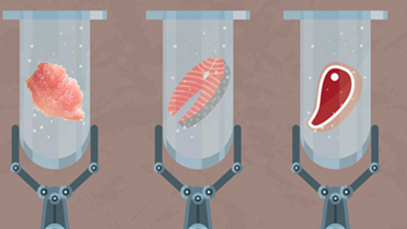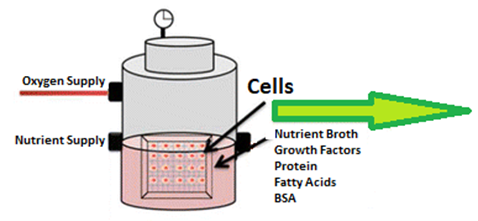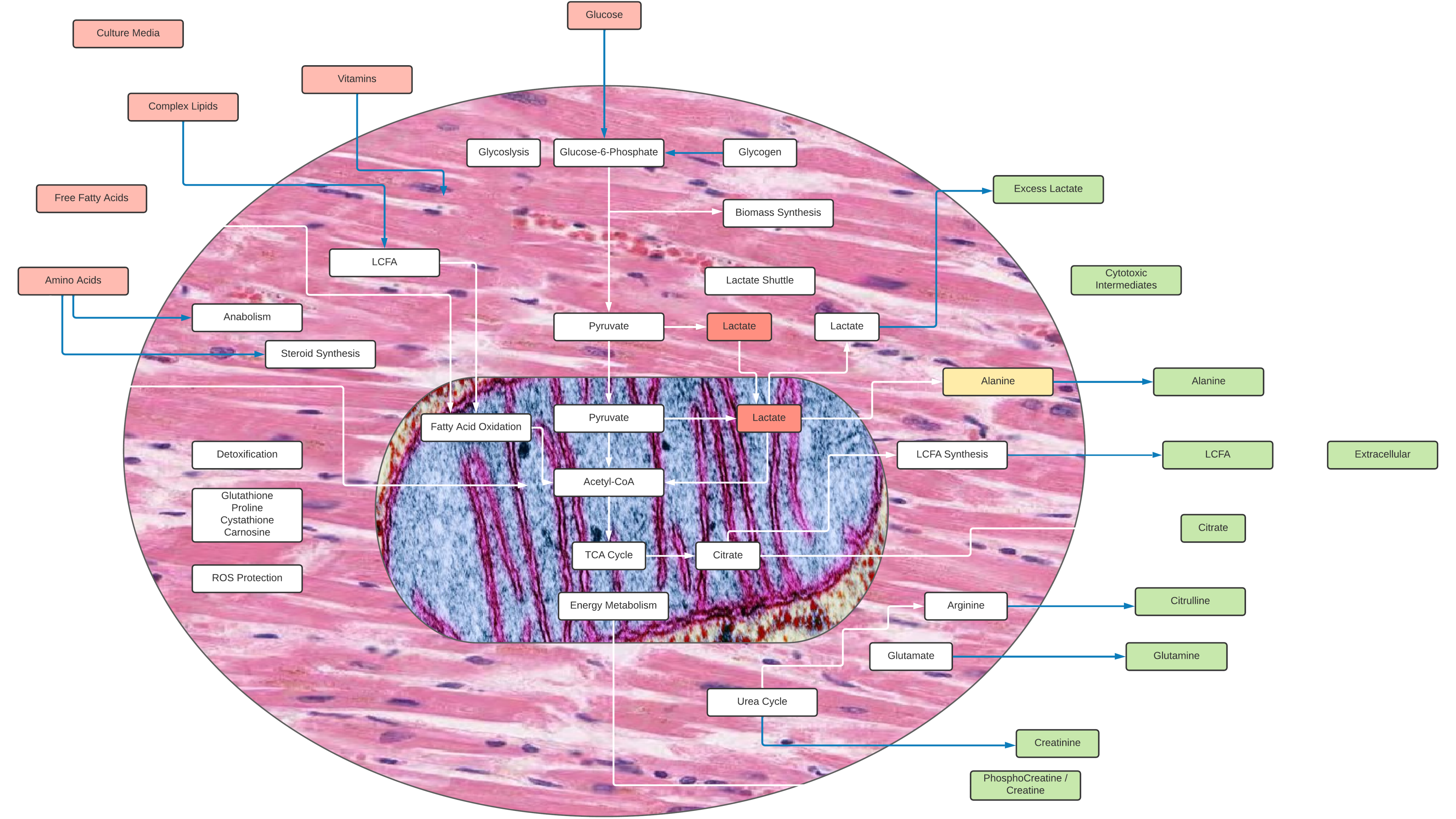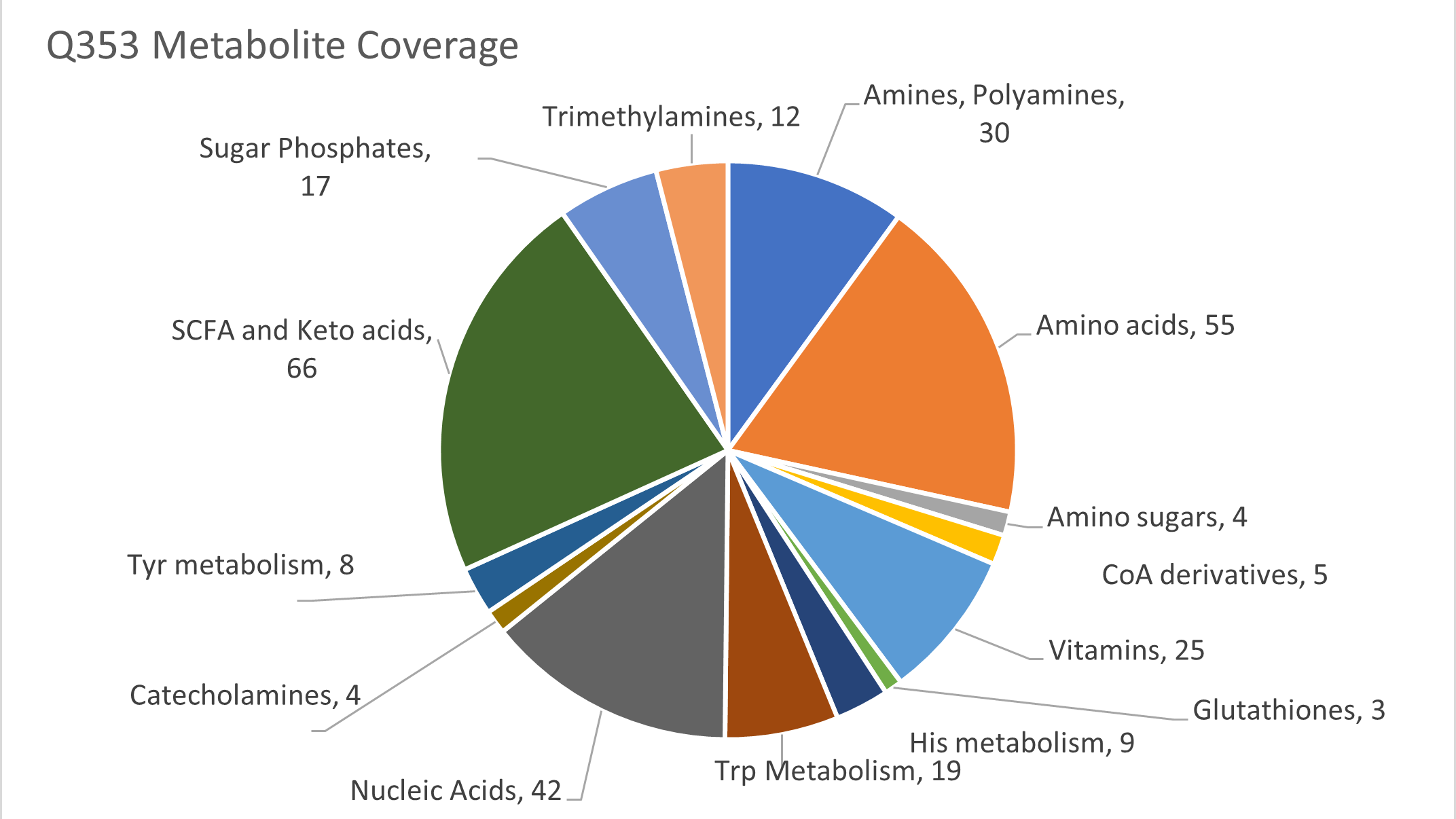Metabolomics and Cell-Based Meat: Identifying Growth Indicators for the Future of Food

This article was written by and sponsored by Human Metabolome Technologies.
Metabolomics has drawn a significant amount of interest over the last 10 years. While most of the work to date has focused on plant, microbial, and tissue samples, metabolomics has a wide range of applications in many fields, including cellular agriculture.
A vital component of a ‘systems biology’ approach, metabolomics is the study of the metabolites in a biological system and is believed to reflect the phenotype of any cell or tissue.
Through this article, we look at how metabolomics can be applied to the cell-based meat field and how metabolomics can address many of the issues in product development.
Metabolomics and Cellular Agriculture
Typically, the efforts to optimize the cell culture media design have focused on preventing the depletion of essential nutrients and managing the accumulation of cellular waste products like lactic acid and ammonia. However, along with ammonia and lactic acid, many other metabolites accumulate in cell cultures, although their effects remain largely unknown for producing cell-cultured meat.

Understanding the effects of these unknown metabolites in the cell culture media has the potential to further improve the productivity of the wider cell-based meat production process. Therefore, nutrients and metabolites, such as tryptophan, polyamines, vitamins, and amino acid degradation products, may leave clues as to what may be driving or inhibiting cell proliferation in the cell-based meat production process.
In addition to improving the cell culture media, metabolite concentrations can represent sensitive markers of both genomic and phenotypic changes in the cells. As a result, metabolomic analyses also have potential applications for cell line testing.
At HMT, we have developed robust metabolomic platforms that greatly facilitate various applications to help cell-based meat and seafood companies assess both their cell culture media formulations as well as their cell lines. Metabolic analyses of cell lines, along with additional -omic services, provide information essential for system-level biological analysis and modeling of native biological systems.
Metabolomics and Cell Culture Media

In the cell culture media, depletion of essential nutrients and extracellular content are vital markers for optimizing cell growth and product quality of cell-based meat. Metabolomics offers a range of ways to measure the change in nutrients to further improve its productivity.
At HMT, we provide both quantitative targeted metabolomics, untargeted metabolomics, and lipidomic profiles that report on both cellular and media composition during product development. The ability to quantify changes in metabolite levels in the growth medium with relative ease offers great potential to optimize the cell culture media for cell-based meat production.
Targeted metabolic profiling approaches, for example, may be used to quantify nutrient utilization and to allow the comparison of metabolite levels to biologically relevant concentrations of the wild-type animal meat.
Untargeted metabolomics, in comparison, allows the observation of all the relative changes in metabolite concentrations in the cell culture media during the meat tissue’s growth phase and may highlight a depletion of essential nutrients that would not have been analyzed by traditional targeted approaches.
Through an untargeted metabolomic profile, the medium can be improved to include only biologically relevant concentrations of essential nutrients and avoids supra-nutritional levels of metabolites that interfere with cell growth and cellular activity.
Case Study: Muscle Metabolism
Optimizing cell development includes our understanding of muscle metabolism.

The technique to generate cultured muscle tissues from stem cells was described long ago, but it is still being developed for the commercial production of cell-cultured meat products. Recent advancements in tissue culture techniques suggest that production may be economically feasible, provided it has physical properties in terms of color, flavor, aroma, texture, and palatability that are comparable to conventional meat.
Many issues remain the fine-tuning of culture conditions, such as the development of the cell culture media that are cost-effective and free of animal products. To optimize the production of cell-cultured meat, companies will need to understand the underlying metabolism of muscle tissue.
Muscle Fuel
The major fuels for muscle are glucose, fatty acids, and ketone bodies. Muscle differs from other cells in having a large store of glycogen. In fact, approximately three-fourths of all the glycogen in the body is stored in muscle. This glycogen is readily converted into glucose phosphate for use within muscle cells. Muscle lacks the enzyme glucose 6-phosphatase, and so muscle retains glucose, its preferred fuel.
In active skeletal muscle, the rate of glycolysis can exceed that of the capacity of the citric acid cycle, so much of the pyruvate from glycolysis is converted to lactic acid, some of which is exported to the liver. In addition, a large amount of the amino acid alanine found in active muscle is formed by the transamination of pyruvate. Alanine, like lactic acid, can be converted into glucose by the liver.
Muscle can absorb and process branched-chain amino acids; however, muscle cannot form urea. Consequently, excess nitrogen is released as alanine and glutamine. The liver absorbs the alanine, removes the nitrogen for disposal as urea, and processes the pyruvate to glucose or fatty acids.
The metabolic pattern of resting muscle is quite different. In resting muscle, fatty acids are the major fuel, meeting 85% of the energy needs. In cell culture, while the genomic wiring may be set for active muscle, cell base culture relies more on fatty acids than glucose.
While the genomic wiring may be set for active muscle metabolism, cell cultures typically rely more on fatty acids than glucose for energy. This may need to be measured via metabolomics to ensure that cell-cultured muscle tissue for cell-based meat matches the metabolomic profile of conventional animal meat.
ATP cyclization and Creatine
Another attribute to consider in muscle metabolism is ATP cyclization using creatine. With cell proliferation and muscle cell density comes the need to recycle nitrogen for biomass growth, DNA synthesis, and the ability to handle reactive oxygen species and nitric oxide synthesis.
Therefore, measuring extracellular lactic acid, pyruvate, long-chain fatty acids, glutamine, and other metabolites enables cell development optimization. Measuring intracellular metabolites from cells and cell pellets allows for measurements regarding oxidative stress, anabolism, and energy metabolism.
Therefore, understanding the needs of cell-based muscle requires understanding muscle metabolism to entirely understand the state of the tissue cultures that will become cell-cultured meat.
Lactic Acid Shuttle
Lactic acid is formed and utilized continuously in diverse cells under fully aerobic conditions, including in muscle tissue. In most cells, lactic acid is considered an end product of glycolysis. However, lactic acid, considered a metabolic waste product, has an essential part in muscle metabolism. How much lactic acid is favorable, and how lactic acid levels may affect glucose and fatty acid metabolism is not fully understood.
Metabolomics for the Future of Food
Quantitative analysis lends itself to improved metabolic comparisons over time. At HMT, our Q353 platform quantitates over 350 metabolites in cell lysates, cell pellets, and cell culture media. The Q353 panel covers many critical classes of metabolites essential for cell growth for cell-cultured meat.

In addition to quantitative measurements, HMT offers comprehensive untargeted screenings using our OMEGA Scan. Offering both polar and lipid measurements, metabolomics provides for a pathway to optimize cell media and cell development processes to optimize cell attributes such as composition, taste, or growth.
As we previously mentioned, one of the most attractive values about HMT metabolomic profiling is that we can start with a product development scale very easily. Instead of requiring hundreds of grams of a cell-based meat sample, milligrams of material is suitable for our metabolomic studies.
Our commitment to innovation, quality, and service, make us the ideal partner for the cell process development of your tissue cell culture projects. Our expertise spans working with many different cell lines and many years of studying and understanding cellular metabolism.
This article was sponsored by Human Metabolome Technologies. For more information about Human Metabolome Technologies, please visit their website (en.humanmetabolome.com) to learn more or contact Dr. Alex Buko or Gina Johnson.
Photographs provided by Human Metabolome Technologies.
Stay connected with CellAgri
Join our mailing list to receive the latest news and updates weekly from the cellular agriculture industry. Your information will not be shared.





